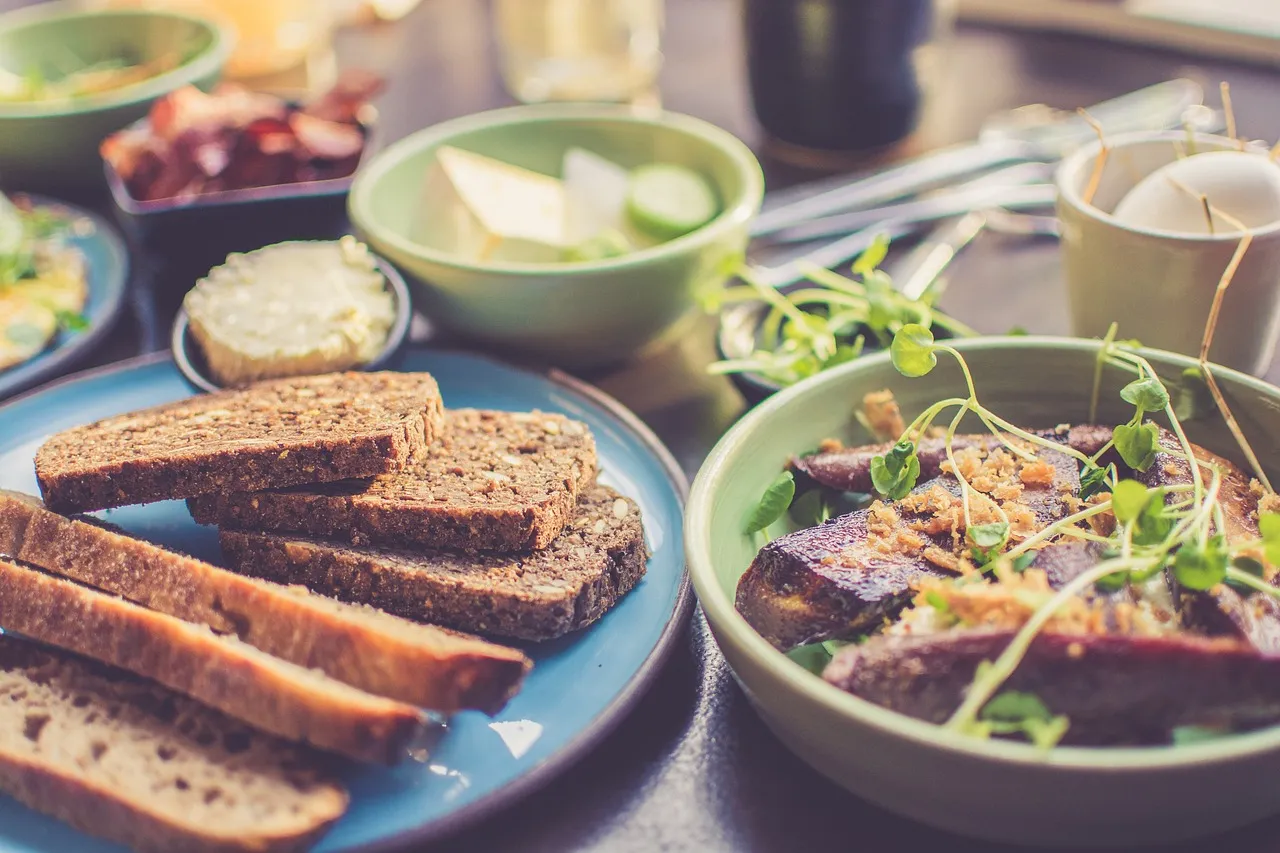Artichokes in Philippines: Grow, Cook, & Enjoy

`markdown
Artichokes in the Philippines: A Comprehensive Guide
Introduction
While not a traditional Filipino crop, artichokes can be successfully grown in the Philippines. However, understanding specific environmental needs is paramount for successful cultivation. This detailed guide explores optimal growing conditions, planting techniques, common challenges, and essential maintenance for thriving artichoke plants. Learn how to enjoy this Mediterranean delicacy, even in a tropical climate.
Understanding Artichokes: Varieties and Benefits
Before diving into cultivation, knowing different artichoke varieties proves beneficial. “Green Globe” remains a popular choice, known for its large, tender hearts. Romanesco varieties offer a unique purple hue and delicate flavor. Select a variety that best suits your taste preferences and climate adaptability.
Artichokes boast numerous health benefits. They are rich in antioxidants, fiber, and essential vitamins. In addition, they aid in digestion, liver function, and cholesterol regulation. Incorporating homegrown artichokes into Filipino cuisine offers both culinary and health advantages.

View Product

View Product
Climate Considerations for Artichoke Cultivation in the Philippines
The Philippines’ tropical climate presents challenges for artichoke cultivation. Artichokes thrive in cooler temperatures, ideally between 15°C to 20°C (59°F to 68°F). High humidity also increases the risk of fungal diseases. Therefore, careful planning and proactive management are essential.
Optimal Planting Seasons:
Planting during the cooler months, particularly November to January, is recommended. This timeframe allows artichokes to establish themselves before the hotter months arrive. Selecting a planting site with partial afternoon shade reduces heat stress.
Addressing Humidity Challenges:
Improve air circulation around plants by providing adequate spacing. Avoid overhead watering to minimize leaf wetness and reduce the risk of fungal infections. Regularly inspect plants for signs of disease, taking prompt action if problems arise.
Soil Preparation: The Foundation for Healthy Artichokes
Well-drained soil is crucial for artichoke growth. The ideal pH level ranges from 6.0 to 6.5, slightly acidic to neutral. Conduct a soil test to determine pH and nutrient levels. Amend the soil accordingly to create the optimal growing environment.
Soil Amendment Techniques:
Incorporate ample organic matter, such as compost, well-rotted manure, or peat moss, into the soil. Organic matter improves drainage, aeration, and water retention. Raised beds further enhance drainage, particularly in areas with heavy clay soil.
Fertilization Strategies:
Artichokes benefit from regular fertilization. Use a balanced fertilizer with equal amounts of nitrogen, phosphorus, and potassium. Side-dress plants with compost or aged manure throughout the growing season to provide continuous nutrient supply.
Planting Artichokes in the Philippines: A Step-by-Step Guide
Artichokes can be propagated from seeds, cuttings, or divisions. Starting with seedlings purchased from a reputable nursery simplifies the process. However, growing from seeds or cuttings offers greater control and cost savings.
Propagation Methods:
Transplanting Techniques:
Dig a hole slightly larger than the root ball. Gently remove the plant from its container and loosen any circling roots. Place the plant in the hole, ensuring the top of the root ball is level with the surrounding soil. Backfill with soil and water thoroughly.
Pest and Disease Management: Protecting Your Artichoke Crop
Artichokes are susceptible to various pests and diseases. Regular monitoring and prompt action are crucial for maintaining healthy plants. Integrated pest management (IPM) techniques are essential for sustainable pest control.
Common Pests:
Common Diseases:
Watering and Fertilizing for Optimal Growth
Consistent watering is essential, especially during dry periods. Water deeply and infrequently, allowing the soil to dry slightly between waterings. Avoid overwatering, as this can lead to root rot.
Watering Strategies:
Fertilizing Schedule:
Pruning Techniques for Artichoke Production
Pruning encourages healthy growth and increased bud production. Remove dead or damaged leaves regularly. After harvest, cut back the plant to promote new growth.
Pruning Schedule:
Harvesting Artichokes:
Harvest artichokes when the buds are firm and the bracts are tightly closed. Cut the stem about 2-3 inches below the base of the bud. Harvest early in the morning for best flavor.
Overwintering Artichokes in Warmer Climates
In warmer climates like the Philippines, artichokes do not require special overwintering protection. However, protect plants from excessive rainfall during the wet season. Ensure good drainage to prevent root rot.
Strategies for Year-Round Cropping:
Potential Challenges and Troubleshooting
Growing artichokes in the Philippines can present challenges. Be prepared to address common issues.
Common Problems:
Troubleshooting Techniques:
Artichokes in Filipino Cuisine
Artichokes can be incorporated into various Filipino dishes. Experiment with different recipes to discover your favorites.
Culinary Uses:
Where to Find Artichoke Supplies in the Philippines
Find artichoke seeds, seedlings, fertilizers, and other supplies at local nurseries, garden centers, and online retailers.
Recommended Suppliers:
Conclusion
With proper knowledge and care, artichokes can thrive in the Philippines. By understanding their specific needs and following this guide, you can enjoy the delicious and nutritious benefits of homegrown artichokes. Embrace the challenge and add this unique crop to your Filipino garden.
`
`markdown
Cultivating Artichokes in the Philippines: A Comprehensive Guide
Artichokes, a unique and nutritious vegetable, aren’t traditionally grown extensively in the Philippines. However, with the proper techniques and understanding of their specific needs, Filipino farmers and gardeners can successfully cultivate artichokes in certain regions of the country. This section delves into the details of artichoke cultivation in the Philippines, covering ideal growing conditions, planting strategies, potential challenges, and essential maintenance practices. Successfully growing artichokes requires attention to detail, particularly regarding climate control and pest management.
Understanding Artichoke Growth Requirements
Before embarking on artichoke cultivation, understanding the plant’s specific needs is crucial. This knowledge forms the foundation for successful growth and optimal yields. The key factors influencing artichoke growth include climate, soil type, sunlight exposure, and water availability. Therefore, careful assessment and preparation are essential before planting.
Ideal Climate for Artichokes
Artichokes thrive best in Mediterranean-like climates characterized by mild, wet winters and cool, dry summers. Temperatures between 15°C and 20°C (59°F and 68°F) are ideal during the growing season. Since the Philippines is a tropical country, the cooler months, typically from November to February, offer the most suitable window for artichoke cultivation. However, even during these months, temperatures can sometimes be higher than optimal, requiring specific management strategies. Choosing a location with slightly cooler microclimates, like higher elevations, can also enhance the chances of success.
Soil and Sunlight Preferences
Well-drained soil is essential for artichoke growth. Artichokes perform best in soil rich in organic matter with a slightly acidic to neutral pH, ranging from 6.0 to 7.0. Sandy loam soils are generally preferred because they allow for good drainage and aeration, both critical for preventing root rot. Full sun exposure, requiring at least six to eight hours of sunlight daily, is also essential for vigorous growth and optimal bud production. Therefore, when selecting a planting location, prioritize areas with ample sunlight and well-draining soil.
Water Management
Consistent moisture is essential for artichoke growth, especially during bud development. Artichokes require regular watering but are susceptible to root rot if the soil remains waterlogged. Careful monitoring of soil moisture levels is crucial, and irrigation should be adjusted based on rainfall patterns. Drip irrigation systems are preferred, delivering water directly to the root zone and minimizing water waste and leaf wetness, which can promote fungal diseases. Furthermore, ensure adequate drainage to prevent water from accumulating around the base of the plants.
Selecting the Right Artichoke Variety
Choosing the right artichoke variety is crucial for successful cultivation in the Philippines. Some varieties are better suited to warmer climates than others. Selecting a variety that is more tolerant to heat and humidity can significantly improve your chances of a successful harvest. Additionally, consider factors like bud size, yield potential, and resistance to common pests and diseases.
Popular Artichoke Varieties
Several artichoke varieties are known for their adaptability and suitability for warmer climates. Some of the more popular options include:
Considerations When Choosing a Variety
When choosing an artichoke variety, consider the following factors:
Planting Artichokes in the Philippines
The planting process significantly impacts artichoke health and productivity. Properly preparing the soil, selecting the right planting time, and using appropriate planting techniques are crucial steps for successful artichoke cultivation. Neglecting these details can lead to poor growth, increased susceptibility to pests and diseases, and reduced yields.
Soil Preparation for Planting
Thorough soil preparation is vital for ensuring optimal artichoke growth. Start by clearing the planting area of any weeds, rocks, or debris. Then, amend the soil with plenty of organic matter, such as compost, well-rotted manure, or peat moss. Organic matter improves soil drainage, aeration, and fertility, providing artichokes with the nutrients they need to thrive. Additionally, perform a soil test to determine the pH level and nutrient content. Adjust the soil pH if necessary, using lime to raise the pH or sulfur to lower it. Incorporate any needed fertilizers based on the soil test results, following recommended application rates.
Choosing the Right Planting Time
As mentioned earlier, the cooler months in the Philippines, typically from November to February, are the most suitable for planting artichokes. Planting during this period allows the plants to establish themselves before the onset of warmer temperatures. Avoid planting during periods of heavy rainfall, as this can lead to waterlogged soils and increase the risk of root rot. If starting artichokes from seed, begin the germination process indoors about 8-10 weeks before the intended planting date. This gives the seedlings a head start and allows them to develop a strong root system before being transplanted outdoors.
Planting Techniques
Artichokes can be planted from seed or from vegetative propagules like bare root or rhizomes, but bare root and rhizomes are more suited for warmer climates as they are mature. Here’s a step-by-step guide on planting artichokes:
Essential Artichoke Maintenance Practices
Proper maintenance is crucial for sustained artichoke health and productivity. Consistent watering, fertilization, pest and disease control, and pruning are essential aspects of artichoke care. Neglecting these maintenance practices can lead to reduced yields, increased susceptibility to pests and diseases, and shortened plant lifespan.
Watering and Fertilization
Consistent watering is essential, especially during dry periods. Provide plants with deep, infrequent watering, allowing the soil to dry slightly between waterings. Monitor soil moisture levels regularly and adjust watering accordingly. Artichokes are heavy feeders, so regular fertilization is essential for optimal growth. Apply a balanced fertilizer, such as a 10-10-10 formulation, every 4-6 weeks during the growing season. Supplement fertilizer applications with organic amendments, such as compost tea or fish emulsion, to provide essential micronutrients.
Pest and Disease Management
Artichokes are susceptible to several pests and diseases, particularly in warm and humid climates. Common pests include aphids, spider mites, snails, and caterpillars. Regularly inspect plants for signs of pest infestation and take appropriate control measures. Organic pest control methods, such as insecticidal soap, neem oil, and Bacillus thuringiensis (Bt), are preferred. If chemical pesticides are necessary, use them sparingly and follow label instructions carefully. To minimize disease problems, ensure good air circulation around plants and avoid overhead watering. Fungal diseases, such as powdery mildew and botrytis, can be controlled with fungicide applications. Remove any infected plant material promptly to prevent the spread of disease.
Pruning and Weed Control
Regular pruning is essential for maintaining plant health and promoting bud production. Remove any dead, damaged, or diseased leaves and stems promptly. After harvesting the main bud, cut back the stem to encourage the development of side shoots. Weeds compete with artichokes for water, nutrients, and sunlight, so effective weed control is essential. Regularly hoe or hand-pull weeds around the base of the plants. Mulch can also help suppress weed growth.
Harvesting Artichokes
Knowing when and how to harvest artichokes is crucial for maximizing flavor and quality. Artichokes are typically harvested when the buds are fully developed but before the bracts begin to open. The buds should be firm and plump, with a deep green or purple color, depending on the variety. To harvest an artichoke, use a sharp knife to cut the stem about 2-3 inches below the base of the bud. Handle the buds carefully to avoid bruising or damaging them. Harvested artichokes can be stored in the refrigerator for up to a week.
Overcoming Challenges in Artichoke Cultivation in the Philippines
Growing artichokes in the Philippines presents unique challenges due to the country’s tropical climate. Overcoming these challenges requires a combination of careful planning, appropriate cultural practices, and proactive management strategies. Understanding the potential obstacles and implementing effective solutions are crucial for successful artichoke cultivation in the Philippine setting.
Heat Stress Management
One of the biggest challenges of growing artichokes in the Philippines is managing heat stress. High temperatures can cause the plants to bolt (flower prematurely), reduce bud quality, and increase susceptibility to pests and diseases. To mitigate heat stress, consider the following measures:
Disease Prevention
The humid climate in the Philippines can create favorable conditions for fungal diseases to thrive. To prevent disease problems, follow these practices:
Pest Control
A variety of pests can attack artichokes, including aphids, spider mites, snails, and caterpillars. Regularly monitor plants for signs of pest infestation and take appropriate control measures. Employ organic pest control methods whenever possible. Encourage beneficial insects, such as ladybugs and lacewings, to help control pest populations.
Soil Improvement
Many soils in the Philippines are not ideal for artichoke cultivation. Improve soil quality by amending it with plenty of organic matter. Conduct regular soil tests to monitor nutrient levels and pH. Incorporate needed fertilizers and soil amendments based on the test results.
Artichokes in Filipino Cuisine
While not a traditional Filipino ingredient, artichokes can be incorporated into various dishes to add a unique flavor and nutritional value. Here are a few ideas:
To aid in the culinary exploration of artichokes, you might find an artichoke extract supplement useful:

View Product

View Product
View Product-Brain-Booster-Memory-Mood-Liver-Supplement-i.202321183.3675626775)

View Product
Conclusion: Growing Artichokes in the Philippines
While artichoke cultivation in the Philippines requires careful planning and management, it is certainly achievable. By understanding the plant’s specific needs, selecting the right varieties, implementing proper planting and maintenance practices, and overcoming the challenges posed by the tropical climate, Filipino farmers and gardeners can successfully grow artichokes and enjoy their unique flavor and nutritional benefits. Experimenting with different varieties and techniques will help you determine what works best in your specific region and growing conditions.
`

